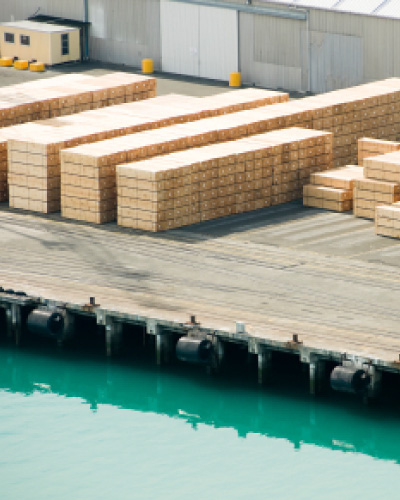3 min read
Are European Lumber Producers Missing out on Booming US Market?
Agris Melnis : February 10, 2021

As US homebuilding continues at a steady pace, US lumber producers have risen to meet the immense demand from the construction industry. But a gap in supply that was exposed during the peak of the pandemic’s first wave may become a longer-term issue that could keep upward pressure on lumber prices. Canadian lumber shipments to the US—which make up a significant chunk of US supply—were down by nearly 20% in April 2020, and production levels are unlikely to return due to a combination of factors:
- Many Canadian forests have undergone significant changes over the last decade due to infestation from the Mountain Pine Beetle (MPB), which has killed millions of acres of trees. Salvage logging of these trees has largely ended and available supply has tapered as a result.
- A reduction in British Columbia’s Annual Allowable Cut (AAC) has significantly reduced production volumes in that region. The AAC is set periodically and the current figure — 3.1 million cubic meters (m3) per year — was established in February 2012. The base case for the new AAC would be 2.65 million m3 per year — a reduction of 15%.
Going forward, the limited lumber supply from Canada – as well as log supply issues in the US Pacific Northwest – will mean European lumber producers will have an opportunity to play an increasingly important role as suppliers to the US construction industry. How have those markets responded to the events that transpired during 2020?
Sweden
Swedish sawmills are quite flexible and are accustomed to trading with countries where there is sufficient demand. Since the COVID-19 pandemic gripped the world in 2Q2020, Swedish sawmills have nearly doubled their lumber exports to the US — a total volume that is roughly 5% of all Swedish lumber production.
However, domestic deliveries of lumber decreased by 5% in 2020. While the Swedish construction trade has been stable, the industry is coping with reduced demand from certain segments and other trading partners. Total production and exports have fallen approximately 15% as a result. Based on the decrease in demand, log stocks at Swedish sawmills have remained thin to allow for more flexibility in a rapidly changing market.
Finland
Finland was not a significant exporter of finished lumber to the US in 2020, as Finnish producers focused more on stable demand from the European, Japanese and Middle East/Northern Africa markets. Total production capacity of Finnish sawmills was down significantly last year. Softwood lumber production through 3Q2020 was down over 14%, and plywood production was down over 19%. It’s important to note that Finnish paper and paperboard production was also down markedly during the same period.
Log supply for Finnish sawmills is stable and slightly increasing, and they are in a good position to take advantage of the current high prices in the US.
Germany
The massive amount of beetle-killed spruce across European forests is expected to peak in 2021. This dead timber can rot much quicker than some other species in different parts of the world, so salvage efforts of hundreds of millions of cubic meters will be in full swing for the next few years.
The recent trade disputes between the US and China have presented an opportunity for European log exporters; Germany has taken advantage of the situation and has been exporting huge volumes of salvaged timber to China. The increase in sawn log exports has not impacted domestic sawmill consumption, however. Germany still manufactures a significant amount of lumber and during 2H2020, exports to the US nearly doubled.
Baltic States
The construction and lumber markets in the Baltics have been unusually active. Since August 2020, global markets have been driving the demand. Like Sweden, Baltic exporters have increased their lumber exports to the US to meet the strong demand and take advantage of historically high prices.
The BREXIT political development has also driven a strong increase in lumber demand from the UK. British importers placed tremendous orders at the end of 2020 in order to beat trade rule changes that took effect in January 2021. Log prices in Estonia and Latvia have increased about 5%, but demand for sawmill byproducts (chips) is decreasing, which is negatively impacting profitability.
Pent-up US housing demand could continue outstripping available supply in the near term, which will keep upward pressure on lumber prices. Housing starts were up 5.8% in December and 2020 starts were up 7.0% over 2019 starts, which suggests there is momentum behind the trend. Given the backlog of sold-but-not-started units (since January 2020, an average of 28% of new homes had not been started when sold), it is safe to conclude the ongoing building boom is likely to continue for several more months, which presents continued opportunities for European lumber manufacturers.





